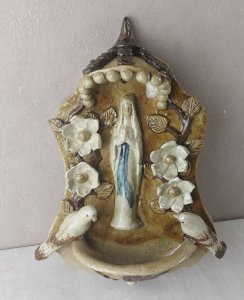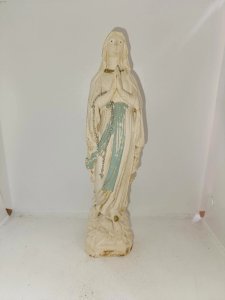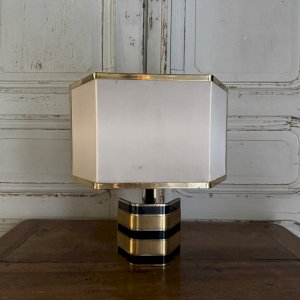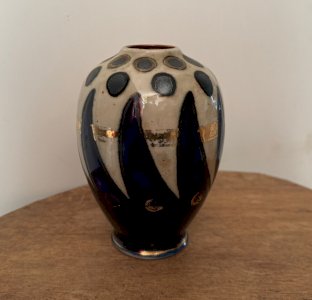- Sell Now
- Home
-
FURNISH
All STORAGE FURNITURE • Wardrobe • Chests of drawers, Chiffonnier • Sideboard • Shelves, Bookshelves • File cabinet • Sewing Furniture • Bar cabinet • TV Stand • Trunk, Chest TABLE & BEDSIDE TABLE • Dinner Table • Coffee table, side table, end table & Bedside • Console, Pedestal table & Selette • Serving Table, Trolley • Card Table • Draper's counter & table SEAT • Sofa • Armchair • Chair • Stool • Bench • Daybed • Beanbag & Footrest • Deckchair & Outdoor DESK, SECRETARY, DRESSING TABLE GARDEN LOUNGE BEDDING • Bed • Bedhead • Cradle, Moses basket CRAFT FURNITURE, WORKSHOP • Workbench • Stool, Ladder, Step • Easel & Trestle SCREEN PIANO
-
DECORATE
All TO PUT • Sculpture, Statuette • Vase & Planter • Dame Jeanne, Bonbonne & Flacon • Bridal globe, Dome • Pin tray, Ashtray • Candlestick & Candle • Photo frame • Stone, Fossil, Mineral • Earth Globe MIRROR WALL DECORATION • Painting • Engraving & Illustration • Poster • Tapestry • Wall Frame • Plate & Sign • Juju Hat & Wall Paniel • Mask • Hunting Trophy • Other object to hang CLOCK, PENDULUM & ALARM CLOCK ARRANGEMENT • Jar, Box & Case • Basket, Wastebasket & Crates • Magazine Rack & Vinyl Holder • Display & Spinner • Coat hook & Coat rack • Furniture Valet & Mannequin • Towel Holder • Suitcase & Travel Bag • Bottle Rack • Umbrella holder BATHROOM OFFICE • Mail holder • Bookends • Sulphide & Paperweight • Stationery FIREPLACE ACCESSORIES HOBBIES • Vintage Sport • Music • Vintage device • Smoking Item • Militaria, Ancient weapon • Miniature Vehicle • Game, Playing Cards • Collection object & Curiosity BIRD CAGE RELIGION, SPIRITUALITY
- TEXTURE
- ILLUMINATE
-
ACCOMODATE
All TABLE & SERVING • Plate • Silverware • Knife Holder • Glass • Bowl, Mug, Cup • Bowl, Ramekin & Cup • Dish, Cup & Salad Bowl • Tray, Basket & Server • Table Mat • Pitcher, Carafe, Bottle, Tea & Coffee Jug • Ice Bucket • Salt & Pepper shakers, Oil & Vinegar shakers • Sugar and jam maker • Gravy boat • Butter dish • Egg cup • Terrine OLD BALANCE CUTTING BOARD GRINDER CASSEROLE, SAUCEPAN & PAN KITCHEN UTENSIL & ACCESSORY
- TINKER
- KIDS
- Jewelry & Accessories
Login
Related Products
Description
JAMES PRADIER VIRGIN OF SEVEN Sorrows PLASTER MEDALLION UNDER DOME 19C C113 Plaster medallion framed under curved glass, signed "J. Pradier" This is a sculpted religious plaster plaque, in a glass dome frame enclosed in a brass frame. This is the Virgin of the Seven Sorrows. Note traces of oxidation on the brass. Jean–Jacques known as James Pradier, born in Geneva (Switzerland), is the fourth child of a family which included an engraver and 2 painters. At the age of 14, James Pradier enrolled at the Geneva School of Drawing, then he joined his brother Charles–Simon in Paris. He successively obtained the 2nd and then the 1st emulation prize at the École des Beaux-arts where he was a student of the sculptor François-Frédéric Lemot (1771-1827). In 1813, James Pradier won the Prix de Rome with “Neoptolemus prevents Philoctetes from piercing Ulysses with his arrows” and he left the following year for the Villa Medici in Rome. Upon his return to Paris in 1819, he exhibited in the Salons. Appointed professor at the École des Beaux Arts, officer of the Legion of Honor, James Pradier obtained numerous official commissions where he celebrated the human body. Very fashionable, he enjoys great notoriety; a whole society of musicians, poets, writers and politicians frequent his workshop. Leaving an abundant body of work, he died of an apoplexy during an excursion to Bougival on June 4, 1852. Pradier was a neoclassical sculptor influenced by the romantic movement and an elegant and sensual art. He is attributed with a certain talent but also a brutal and vain nature, always seeking to dazzle his interlocutors. Some works: - Neoptolemus prevents Philoctetes from piercing Ulysses with his arrows (plaster bas-relief, 1813), - Wounded Niobide (Louvre Museum, Paris, 1822), - Psyche (marble, 1824), - Prometheus (marble, Museum du Louvre, Paris, 1827), - Phidias (Louvre Museum, Paris, 1831), - The Three Graces (marble, Louvre Museum, Paris, 1831), - Satyr and Bacchante (plaster, Palais des Beaux-Arts, Lille , 1833), - Louis-Philippe I crowned with oak leaves (1835), - The Fames (Arc de Triomphe de l'Étoile, Paris, 1836), - The city of Lille (Place de la Concorde, Paris, 1836) , - The city of Strasbourg (Place de la Concorde, Paris, 1836), - Baron Cuvier (castle of Versailles, 1839), - The Duke of Orléans (bronze, Girodet Museum, Montargis, 1842), - The Serious Comedy ( rue Richelieu, Paris, 1844), - The Light Comedy (rue Richelieu, Paris, 1844), - Phryné (marble, 1845), - Saint Louis (Aigues-Mortes, Hérault, 1849), - La Toilette d'Atalante (marble , 1850), - Industry (Palais Brongniart, Paris, 1851), - Fontaine de l'Esplanade (Nîmes, 1851), - Sapho (marble, Musée d'Orsay, Paris, 1852), - Mausoleum of the Duke of Berry (Versailles Cathedral), - Hébé (Terracotta), - Dancing Odalisque (statuette, bronze). For the condition, please detail the photos. The photos are an integral part of the description. Dimensions: Diameter: 16.5 Depth: 6 cm I remain at your disposal for any questions. Sub-type: Sculpted plaster miniature Style: Louis XV, Neoclassical Material: plaster and brass Origin: France Type: Showcase object, Decorative
Réf :
#213213
Comments
Related Products
Description
JAMES PRADIER VIRGIN OF SEVEN Sorrows PLASTER MEDALLION UNDER DOME 19C C113 Plaster medallion framed under curved glass, signed "J. Pradier" This is a sculpted religious plaster plaque, in a glass dome frame enclosed in a brass frame. This is the Virgin of the Seven Sorrows. Note traces of oxidation on the brass. Jean–Jacques known as James Pradier, born in Geneva (Switzerland), is the fourth child of a family which included an engraver and 2 painters. At the age of 14, James Pradier enrolled at the Geneva School of Drawing, then he joined his brother Charles–Simon in Paris. He successively obtained the 2nd and then the 1st emulation prize at the École des Beaux-arts where he was a student of the sculptor François-Frédéric Lemot (1771-1827). In 1813, James Pradier won the Prix de Rome with “Neoptolemus prevents Philoctetes from piercing Ulysses with his arrows” and he left the following year for the Villa Medici in Rome. Upon his return to Paris in 1819, he exhibited in the Salons. Appointed professor at the École des Beaux Arts, officer of the Legion of Honor, James Pradier obtained numerous official commissions where he celebrated the human body. Very fashionable, he enjoys great notoriety; a whole society of musicians, poets, writers and politicians frequent his workshop. Leaving an abundant body of work, he died of an apoplexy during an excursion to Bougival on June 4, 1852. Pradier was a neoclassical sculptor influenced by the romantic movement and an elegant and sensual art. He is attributed with a certain talent but also a brutal and vain nature, always seeking to dazzle his interlocutors. Some works: - Neoptolemus prevents Philoctetes from piercing Ulysses with his arrows (plaster bas-relief, 1813), - Wounded Niobide (Louvre Museum, Paris, 1822), - Psyche (marble, 1824), - Prometheus (marble, Museum du Louvre, Paris, 1827), - Phidias (Louvre Museum, Paris, 1831), - The Three Graces (marble, Louvre Museum, Paris, 1831), - Satyr and Bacchante (plaster, Palais des Beaux-Arts, Lille , 1833), - Louis-Philippe I crowned with oak leaves (1835), - The Fames (Arc de Triomphe de l'Étoile, Paris, 1836), - The city of Lille (Place de la Concorde, Paris, 1836) , - The city of Strasbourg (Place de la Concorde, Paris, 1836), - Baron Cuvier (castle of Versailles, 1839), - The Duke of Orléans (bronze, Girodet Museum, Montargis, 1842), - The Serious Comedy ( rue Richelieu, Paris, 1844), - The Light Comedy (rue Richelieu, Paris, 1844), - Phryné (marble, 1845), - Saint Louis (Aigues-Mortes, Hérault, 1849), - La Toilette d'Atalante (marble , 1850), - Industry (Palais Brongniart, Paris, 1851), - Fontaine de l'Esplanade (Nîmes, 1851), - Sapho (marble, Musée d'Orsay, Paris, 1852), - Mausoleum of the Duke of Berry (Versailles Cathedral), - Hébé (Terracotta), - Dancing Odalisque (statuette, bronze). For the condition, please detail the photos. The photos are an integral part of the description. Dimensions: Diameter: 16.5 Depth: 6 cm I remain at your disposal for any questions. Sub-type: Sculpted plaster miniature Style: Louis XV, Neoclassical Material: plaster and brass Origin: France Type: Showcase object, Decorative
Réf :
#213213
 English
English  Français
Français 




















